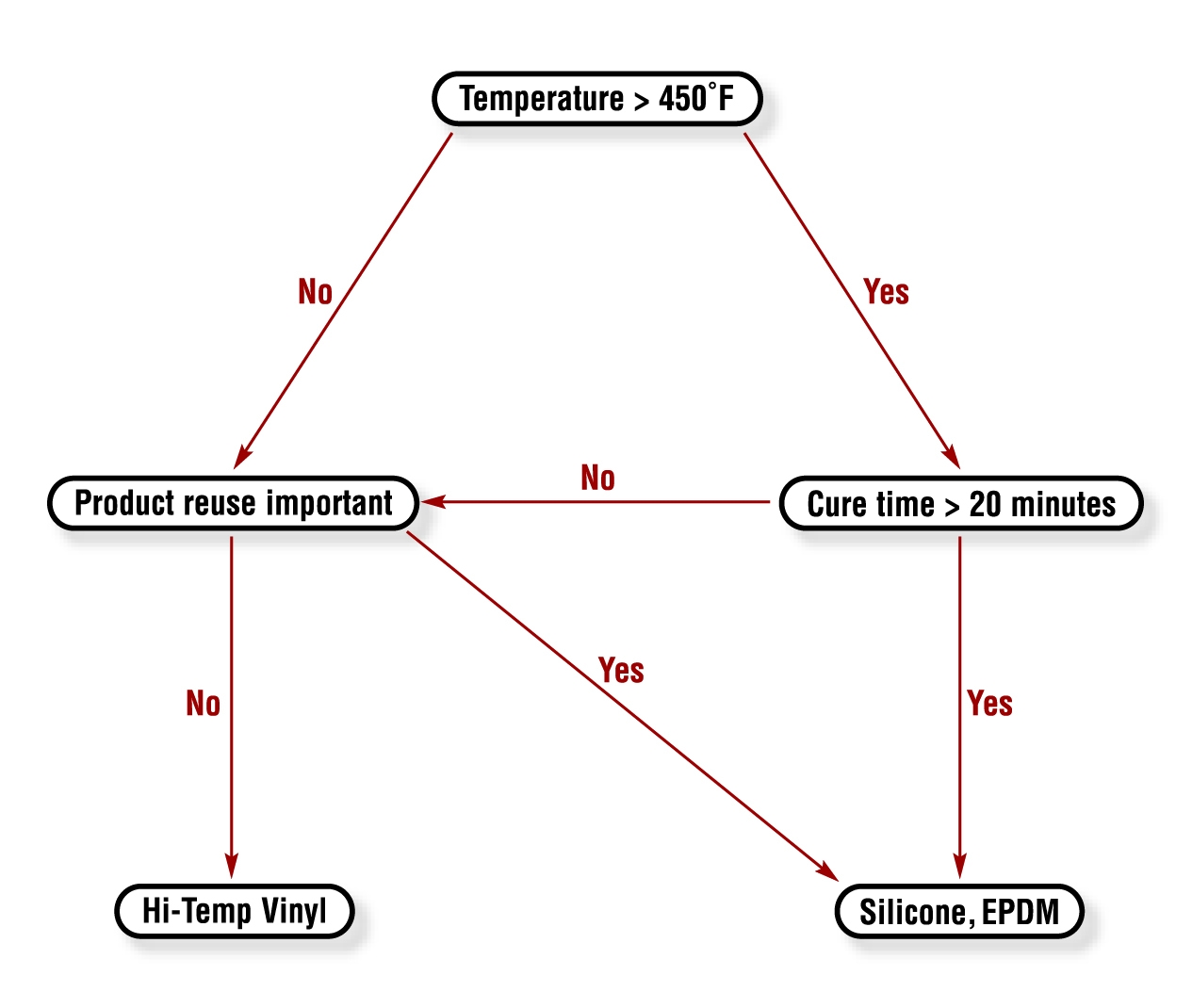Choosing the ideal masking products for your specific application and process can be very challenging as there are many variables at play. Not only must one consider the most effective method for masking (cap, plug, tape, disk or custom solution), but selecting the right material can be very challenging.
Choosing a Style
Determining whether you want to use a cap or cover, plug, tape or disc is typically mandated by the shape and size of the part that needs to be masked more than anything else, but there are actually a number of factors to consider:
How much labor is involved in installing and removing?
Is there any risk of mask falling off or popping out?
How tightly or strongly should the mask fit or adhere to the substrate?
Choosing a Material
For applications that include a baking process to cure the coating, potential solutions will vary depending on a number of factors:
- Surface preparation and cleaning processes
- Baking process - temperature and bake times
- Cooling process
- Resistance to any chemicals used in the 3 processes
- Desire to re-use masks vs. single use mask
| Standard Vinyl | High-Temp Vinyl | EPDM | Silicone | |
|---|---|---|---|---|
| Max Temperature | 225° F (107° C) | 446° F (230° C) | 475° F (246° C) | 600° F (316° C) |
| Painting - Air Dry | Lowest cost alternative. | Functions well. Higher cost alternative. | Functions well. Costly alternative. | Functions well. Costly alternative. |
| Painting with Bake up to 350° | Will withstand some low-cure processes. | Works in most processes at significantly less cost than Silicone or EPDM. | Typically only used if Hi-Temp vinyl does not perform. | Functions well. Costly alternative. |
| Powder Coating | Less effective than high-temp vinyl. | Works in some processes especially when using large masks. One time use. Wash caps to remove any mold release. | Works in most processes. Fewer passes than Silicone products. | Works in nearly every process. Get multiple passes as powder is easily cracked off. |
| E-Coating | Typically will not withstand bake temperatures. | Low cost alternative. Specify industrial wash to eliminate mold release. | Works in most processes. Fewer passes than Silicone products. | Works in nearly every process. Get multiple passes as powder is easily cracked off. |
| Plating | Lowest cost alternative, but some chemicals may break them down. | N/A | Great chemical resistance makes these a safe choice for most plating processes. | Costly alternative. |
| Material | |||
|---|---|---|---|
| Printing with Bake up to 325° | Hi-Temp Crepe 325° (163°) for 20 minutes. | 446° F (230° C) | 475° F (246° C) |
| Powder Coating | 2 mil. Green Polyester resists up to 400° (204°) for 20 minutes. Industry standard. | 1 mil. Polyimide Kapton™ resists up to 500° (260°) for 20 minutes. | Non-Adhesive, Self-Fusing Silicone Tape resists up to 500° (260°). |
| E-Coating | 2 mil. Green Polyester resists up to 400° (204°) for 20 minutes. Industry standard. | ||
| Plating | Vinyl Platers Tape. |
About Finishing
At StockCap, our goal is to determine the best masking product for your application. In most cases, there will be many choices depending on the circumstances involved in your process.
- What is the cure temperature of the process and for how long?
Time and temperature are the primary factors in determining what material to select. We typically recommend testing the lower cost alternatives before moving on to higher-grade products. With molded parts, the vinyl materials are significantly cheaper than their rubber counterparts.
- Is re-usability important?
The higher costs for silicone and EPDM parts may be offset by the fact that they can be used multiple times in many processes. In contrast, vinyl parts are typically only used once.
- Are mold release issues a concern?
Silicone rubber is not the same as the lubricant silicone. Silicone caps and plugs have proven to be successful masks in virtually every coating processes. Vinyl caps do typically utilize mold releases that may affect a powder coating or e-coating process. For this reason, we often put vinyl caps through an industrial washing process.







